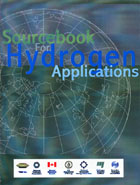
 Enter HyVIEW™
Enter HyVIEW™
Quick Links
| Hydrogen Safety Issues Hydrogen Safety Measures Comparisons Codes & Standards |
Hydrogen Safety Issues
Achieving Safe Hydrogen Systems
It is in the very nature of a fuel to have some degree of danger associated with it. The hazards they represent are neither good, nor bad; they just exist and must be handled.
Hydrogen is not significantly more or less hazardous than other fuels. By knowing something about its use in the past, learning some of its basic properties and behaviour, and making comparisons with other fuels, a public made up of knowledgeable individuals can assess hydrogen's applications and participate in the public acceptance process.
Hydrogen has over the years acquired an image of an immensely powerful and possibly threatening substance. There are still some, for example, who can recall the experience of the Hindenburg in 1937, as well as the cold war and the threat of the hydrogen bomb (H-Bomb). The nuclear fusion reactions involved in the H-bomb have, of course, nothing to do with the chemical reactions involved in the use of hydrogen as a fuel for internal combustion engines and hydrogen fuel cells.
Contrary to the impressions left by the Hindenburg, and the H-Bomb, hydrogen has been used in the chemical, food and electronics industries in large tonnage quantities with a remarkable track record for safety. The basic issue with hydrogen is that it is an unknown quantity, at least compared to other common fuels.
A Common Hydrogen Purpose
The general public, through their regulators such as fire marshals and officials at other levels of government, along with insurers and investors share a common interest in the safe operation of hydrogen systems. One approach to safety in hydrogen products, services, systems and operations procedures is through standardization based on engineering principles and experience. To this end, a century of experience with high-energy density fuels and dangerous goods is summarized in national and international safety standards, industrial manuals of current accepted practice. Some of these are developed by companies who document practices and equipment requirements in manuals and specifications. The NASA Safety Manual for Hydrogen is one example of such internal safety systems and procedures documentation. Others are developed by a consensus process among manufacturers and users of systems through standards writing organizations. When any of these standards is imposed by law (national, provincial, state and municipal), it becomes a regulation with which designers, builders and operators must comply.
Since it has been used extensively in the chemical industry, it has not been necessary, in many cases, to single out hydrogen and create dedicated standards for it. Indeed, hydrogen is often grouped along with other similar commodities and is covered by many existing standards and regulations in most industrialized countries pertaining to the safe transportation, storage and use of dangerous materials such as combustible gases.
Nevertheless, there are certain new applications that will require new standards; many of the former are associated with new energy technologies such as the fuel cell and new storage technologies such as metal hydrides, in addition to technologies associated with the distributed use of hydrogen in the home and in industry, as well as in public and private vehicles.

